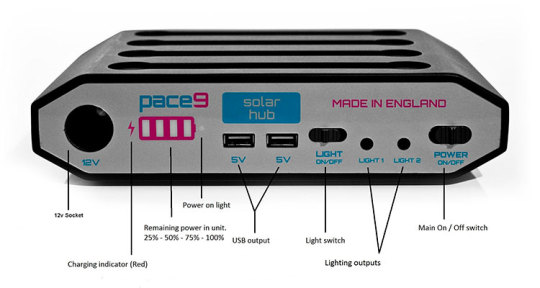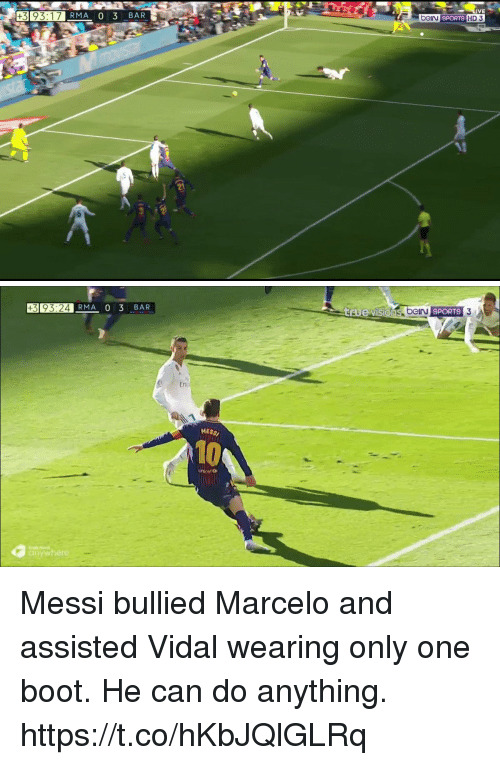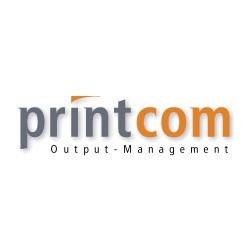Don't wanna be here? Send us removal request.
Text
Are You Looking For a Good Gate Repair Company?

Gates are used in businesses and homes offering added protection and convenience. Having automatic gates can save time and energy, ensuring everyone inside is kept safe, by having a remote control to access the property. Of course this can all fall away when the gate stops working and is in need of repair. Often tired and worn products will need some TLC at some point. If you are a business it's advisable to have your product serviced on a regular basis to avoid problems from happening.
The main sign that you may need the assistance of a gate repair company is when the gate stops working completely. The first step would be the check the batteries in the remote, but if everyone is experiencing this problem, then it's time to call in a company to help.
Ideally you want to choose a gate repair company that will provide you with a twenty four hour service. They should offer an emergency service, which is hugely beneficial if everyone is locked inside the property, unable to get home after a long day at the office.
Ensure the company you choose has extensive experience in the industry. They should supply, service, install and repair these products, giving you peace of mind that you are dealing with a reputable and reliable company that knows what they are doing and will get the job done to the highest standard.
They should be available to help you on short notice. Which is why you will want to do some research online and speak to other companies in your local area to see what company they use for their gate repair.
You want to choose a company that can provide you with a same day service if needed and also be on call throughout the day or night. This is imperative when running a business, because things usually will go wrong late at night when you've had to close up later than usual and then notice the gate isn't closing behind you. You can't leave your business open and unsecured, so you need to have someone you can call and know that they will be arriving soon.
Price will play some role in your decision, though in an emergency, you probably aren't going to worry what you are being charged, as long as the problem is resolved. It's ideal that you organize a good gate repair company in advance and use one company for new installations, services and repairs.
Having a company you already deal with can ensure that you know the pricing, know their workmanship and know what to expect when they arrive. You want to ensure that they are professional and that their technicians have experience and knowledge and are qualified to complete the job at hand to the highest detail.
Reputation is important, which is why most businesses will do extensive research on a gate company before making any decisions. Reading through customer reviews online and speaking to other businesses in the area is the best way to find the best gate repair company in your area.
You need to ensure the https://www.themotorisedgatecompany.com.au/ company you choose doesn't only provide you with a good reputation and experience in the industry, but they should be professional, trustworthy and reliable. You want to know that when you need them most, you can pick up the phone and they will arrive as agreed.
There is nothing worse than choosing a company, going through all the steps and then they don't arrive, leaving you stuck in your offices because it's not safe to leave the building unprotected through the night.
0 notes
Text
5 Things to Look for in an Information Security Consultant

As a management consultant, I am constantly faced with clients who pose the question, "How do we know a really great candidate, when we meet them?".
Although the criterion of what makes a great employee can change with both industry and profession, perhaps one of the most difficult hires a company will ever make is that of the information security manager or consultant.
An information security consultant must engage with both business and technology stakeholders throughout your enterprise, and at levels ranging from the c-suite, through to the employees working on the factory floor or in front of the customers. They must understand the varying needs of every level of every function, and be able to articulate the value proposition of change to stakeholders from a diverse background and career level.
Security also requires that a consultant be able to sell a concept that has almost no perceived value. Although information security may act as insurance within the enterprise, and reduce the likelihood of a security incident, or the impact of such an incident when it occurs; security does not directly add revenue, or reduce costs associated to a particular business process. In point of fact, security actually increases costs associated to many processes, and can also increase both complexity and organizational ambivalence if implemented poorly.
If implemented correctly however, with both skill and diplomatic tact, security can often reduce unnecessary expenditure and improve resilience of business processes at a relatively nominal cost to a business unit.
For these reasons, when selecting your next security resource, try to keep in mind these five key points:
1. Professional accreditation
A security consultant should be professionally accredited with a broad range of recognized vendor-neutral certifications, such as CISSP, CISM, CISA, CEH or CHFI, depending on their specific role. Never hire a resource that only has vendor specific security skills, because information security spans across application, infrastructure, platform and process stacks; including a diverse range of technologies and products.
2. Business and technology skills
Great security consultants have both business and technology skills, giving them the understanding they need to engage with stakeholders from any part of your enterprise, and to fully appreciate the risks associated to functional processes outside the ICT department. Consider hiring only security consultants who have an undergraduate degree in business or management as a minimum, and give preference to professional candidates with post-graduate degrees in security, business administration, commerce, finance or management.
3. Strong exposure to your industry
Because your business needs are unique to your particular industry, seek out professionals who have a strong background in your specific domain, such as aviation, energy, government, finance, or technology services. Strong industry experience enables a consultant to anticipate risk and future security requirements.
4. Understanding of local and international law
Perhaps the greatest failure of most security resources is a lack of legal awareness. Understanding domestic legislation, and international legal obligations is critical to the formation of an accurate risk profile and security control matrix. Issues related to the United States Patriot Act, United Nation's Covenants and Declarations, local privacy laws, industry compliance requirements, and legal enforceability will form the basis of a security solution prior to organizational demands. Without an understanding of your legal environment, a security consultant is providing professional advice without appropriate knowledge, and this may leave your organization open to future legal challenge related to failures in "duty of care" and negligence.
5. Outstanding soft skills
Security consultants are often https://www.sbtb.com.au/Security-Consultant seen as insurance providers, not adding real value to a business's operations or process outcomes. It is also a fact that the majority of companies only see the value in security after a major incident, which for many organizations can be too late, especially in the modern world where the expectations and opinions of your customers are altered in minutes by social media. To ensure engagement through the business, the security consultant must be a master of communication soft skills, and be able to act in the role of persuader, diplomat, negotiator, and even dictator, depending on the circumstance.
0 notes
Text
With DVD Cases, It's All About the Hub

The most distinguishing feature of a DVD case is its hub. And avid DVD users know the names of their favorite hubs as well as they know the names of their favorite directors. Currently, two of the most requested hubs are the M-Locks and the AlphaPAK hub. Both of these hubs come from noted manufacturers who are innovators in their field. In addition, the hubs are known for placing minimal stress on the hub, preventing "floaters," and still allowing easy disc removal.
With the exception of AlphaPAK fans, end-users tend to favor push button hubs. Many DVD users report that, when removing a disc from a pluck hub, the disc bends, which makes them nervous.
There are times, however, when a push-button hub is not the best choice. For example, in thin or slim-style DVD cases, push button hubs have been known to cause floaters, particularly when the cases are shipped individually. During shipping, if a slim-style DVD case is compressed, it can press down on the hub and release the disc.
With slim style DVD cases, you want a pluck hub. The trick with pluck hubs is to select one that is snug enough to ensure your disc is secure during shipping and handling, but can be removed without fear of cracking or bending the disc. With a good DVD hub, you can feel the disc engage when loading by hand and there may be a "click" sound when the disc is locked into place. You don't want a hub that requires a lot of pressure to engage the disc, because this puts stress on the disc's hub and could cause radial cracks around the center. If you hear a harsh "snap" when hand-loading your disc, the hub is too snug. There is a trick to removing discs easily from lift-up hubs. Place the open DVD case on a table or other flat surface. Use your thumb to press down on the hub while while lifting the disc edge with your forefinger.
A good hub is also made of good materials, so pay attention to the amount of recycled content in your DVD case. Virgin polypropylene is a pliable and forgiving plastic, which is desirable in a pluck hub. The more recycled content the DVD case contains, the more rigid it becomes. At Polyline, our favorite blends, are about 80-percent virgin material to 20-percent recycled. It's a good mix that retains most of the properties of virgin material, while reducing production cost. Unfortunately, it's difficult for manufacturers to keep a consistent ratio of virgin to recycled materials, so they won't guarantee a minimum amount of virgin content. A good mixed-content case will still have a good weight to it and little or no odor. If your case feels extremely light and has a strong smell of burnt rubber, it contains a large percentage of recycled materials and will be brittle.
As a side note, a former https://www.solarhub.net.au/solar-energy/solar-power-sydney-nsw/ hub favorite, Amaray's "ying yang" hub is no longer available. NexPAK is phasing out the old design in favor of a hub that is easier to mold. Currently, the Amaray II case has a push button hub and the Original Amaray has a pluck hub with a Y or peace-sign shaped opening. Both Amaray boxes will eventually sport the peace-sign hub.
0 notes
Text
Radeon Commonalities Abound

With the HD6900 series at this point acquirable, all of us made a decision to find several GPUs based upon AMD's newest GPU to find out how the existing harvest of products stacks up. We've got 6 cards here on your behalf, still, of course, a lot of them will be very similar. Virtually all AMD's board companions have released Radeon HD6900 set GPUs based upon AMD's reference model; consequently, there is certainly fairly little to identify the exact cards. Every one of the cards highlighted right here have 2Gig buffers plus the very same output setup. All the HD6970s hold the same fan. There is a couple ways each and every opponent separates itself, yet as you'll notice, the component, thus performance, is very close.
Our Examination Process To gauge the performance belonging to the HD6900 set cards listed in this particular roundup, we applied a mixture of favorite video games and software that take care of an extensive assortment of the DX variety, including DirectX 9, 10, and 11. We mounted the cards in the computer run by just a 3.33GHz Core i7 980, a Gigabyte X58 Express, 12GB of DDR3, and Win 7 Home 64-bit. Also, We used the newest accessible Catalyst drivers available as of this article's posting, v11.1a.
XFX Radeon HD6970 XFX will do a few things to aid its HD6970 be noticeable through the entire group. Even so the card we had taken a review of had not been overclocked and is also using the reference layout PCB, XFX furnished its 6970 by using a tailor made case bracket boasting the XFX brand in its exit ports along with a specialized sticker on the shroud. Apart from that, this is the reference card for sure. XFX furthermore packages little with its HD6970. Together with the card, the only thing that we uncovered included in the package were a driver CD, two or three basic guides, a warranty note, a brochure, a "Do Not Disturb Because I'm Gaming" door knob sign, along with an XFire bridge connection. Even so the $369.99 price tag is tied as the least expensive in the party, we still thought XFX could have done a tad bit more to let its card get noticed.
HIS Radeon HD6970 Turbo Even though it is physically no different from various other reference models, except for the sticker upon its shroud, the HIS HD6970 Turbo at present stands solely, simply because it is the fastest speed 6970 in our roundup and perhaps the top clocked 6970 out there. In any event, its memory and ram clocks have merely modest 20MHz/25MHz jolts, respectively. Irregardless, greater clocks convert to raised efficiency, plus the HIS HD6970 Fan Turbo set up the top benchmark results of the set.
Added to the HIS HD6970 Turbo may be a universal selection of components. With the card itself, HIS kicks in an essential driver disc and basic user's handbook, plus a case banner and some cabling and adapters. There is also a set of two peripheral-PCIE power switchers (a 6-pin, and an 8-pin) in there, too, as well as a DVI/VGA adapter and XFire bridge. Sadly, you'll find no game titles or any other software to speak of. Given that this GPU is the most high-priced in our set, it could have been good to see a number of distinguishing features besides a small overclock, however in the finish, the HIS HD6970 Turbo continues to be the highest clocked 6970 around.
VisionTek Radeon HD6970 If it hadn't come in a VisionTek box, it could be almost impossible to find out where the company's HD6970 originated. VisionTek's HD6970 is actually free of virtually any distinguishing attributes; the GPU adheres firmly to AMD's reference model and http://www.rmasport.com.au/products/outdoor-products/basketball/premier-series/ doesn't actually sport any special decals or graphics. But maybe that's not an undesirable factor. The truth is, given that many of the HD6970 cards reviewd here are so alike, having this kind of Spartan method let VisionTek to price their card competitively.
0 notes
Text
CD Printing - Selecting the Best Printing Method for Your Project

The method of CD printing you choose is governed by some key factors. These are as follows:
How many CDs do you need printed?
What is the intended use of the end product?
Is the budget tight for the project?
What sort of artwork is intended for the discs? Photographic images or block colours?
Once these factors have been considered, you can make a decision about which CD printing process is most appropriate for your particular project.
Let's take a look at each of the processes in turn and their pros and cons.
Digital CD Printing
This CD printing method utilises a printer that employs the same process as an inkjet printer that many home users will be familiar with. In fact, many home printers can be equipped with a CD printing tray for use with pre-manufactured CDRs with a printable surface. A company printing CDs professionally will most likely be using an inkjet printer that is specifically for the printing of CDs. These printers have an auto-loading mechanism enabling the unattended printing of up to 200 CDs. The printer automatically loads unprinted discs and unloads the finished discs onto separate spindles.
Digital CD printing using one of these printers is slow but there are no fixed set up costs involved. This is fine if the order quantity of discs is less than 100, or 200 if there is no fixed, imminent deadline for the order.
This method of printing is capable of producing highly professional looking CDs as an inkjet printer can print at very high resolutions. The printed surface does need protection though and a layer of clear lacquer needs to be applied to the discs to prevent moisture coming into contact with the ink through handling or exposure to damp environments. This necessity adds significantly to the overall project time. Printable discs are available which have a specially formulated surface that becomes water resistant after printing but they are more expensive than regular printable discs and so a decision has to be made depending upon the urgency of the project; extra expense for water resistant discs or extra time for the application of a layer of clear lacquer?
CD Screen Printing
CD Screen printing is ideal for artwork designs that involve solid areas of colour. Screen printing is carried out using a machine with a rotating bed that has 5 separate stations where a different colour of ink can be applied. The CDs can have a base colour applied first over the whole disc area which means that a screen printed CD design can consist of a total of 6 different colours maximum.
The ink used in the CD screen printing process is UV sensitive and as each colour is applied at a station, the disc moves under a UV lamp as it rotates round to the next station. The UV lamp cures the ink and this only requires a moment of exposure.
As the process name suggests the screen printing is applied through the use of very fine mesh screens. There is a separate screen for each colour in the artwork design. To create a screen, a film is produced which has the areas where ink is not to be applied to the disc, blacked out. The new screen is initially coated with a thermal emulsion. The film and the screen are aligned on top of each other using guide marks and are put into an exposure unit. When the screen is exposed to a hot, bright light, the area of thermal emulsion not protected by the dark area on the film is cured. The screen is then washed with a water spray and the areas of uncured emulsion wash away to reveal the mesh.
The screen is then fixed at its station. Once all the screens have been prepared in this way, the printing can begin. The CDs are loaded onto the machine by an automated robotic arm system. They are placed into a platen which holds the disc firmly in position. At each station, ink is added on top of the mesh screen and a rubber squeegee blade passes over the top pressing the mesh down onto the disc surface and forcing the ink through the fine mesh holes and onto the surface of the disc. The ink application stroke takes about a second and each station applies ink to a disc simultaneously as soon as the first 5 discs have been fed into the system. This speed means that a screen printing machine can print more than 3500 discs in an hour so large orders can be completed quickly.
There are, however, significant fixed set up costs due to the requirement for screens and films. These can be reduced by limiting the artwork to fewer colours, with a single colour print onto a silver disc being the most cost effective print. The fixed costs do mean that this CD printing process is only really viable for orders of over 100 discs.
The CD screen printing process is capable of producing a truly amazing CD print at a very high resolution due to the use of extremely fine mesh screens. It is not ideal, though, for printing photographic images due to the presence of subtle colour gradients in these images. What makes the screen printing process truly unique is the availability of fluorescent and metallic inks which can really add a WOW factor to your CD print.
Lithographic (Offset) CD Printing
This printing process is http://printcom.com.au/repairs-maintenance very different from the screen printing process and the two printing machines are set up very differently. The lithographic process takes advantage of the fact that the printing ink and water do not mix much like oil and water.
The artwork image is applied to a lithographic CD printing plate using a laser. The printing plate surface is rough in texture and is pre-coated with a thermally reactive emulsion.
1 note
·
View note